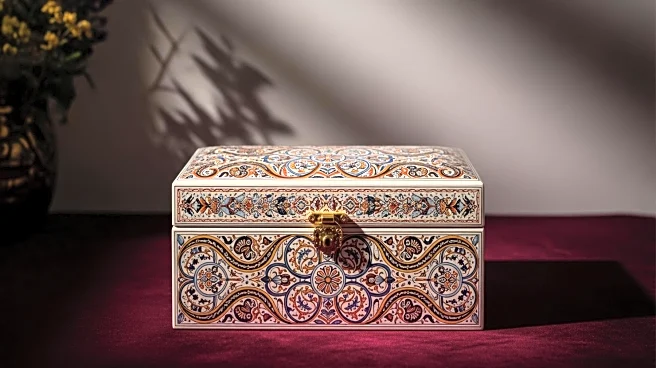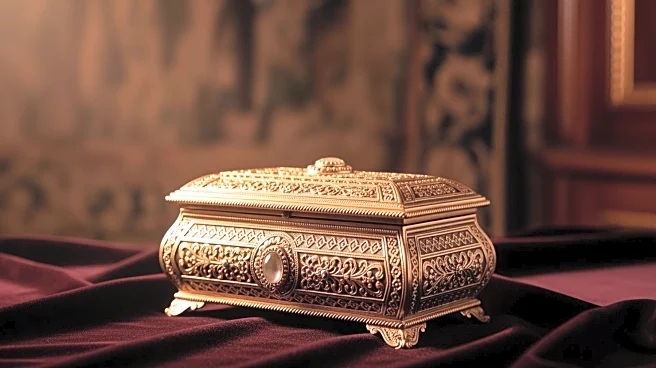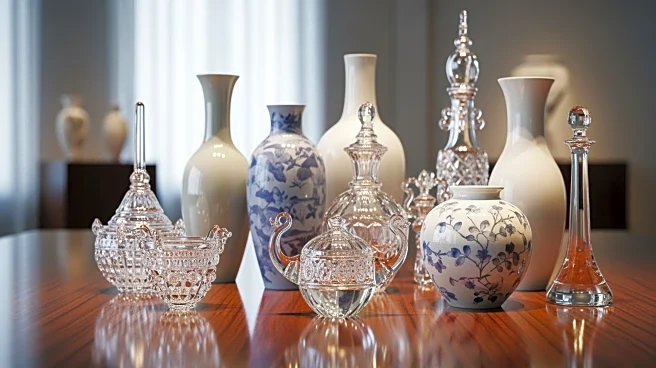What's Happening?
A rare Indian jewellery casket depicted in Johannes Vermeer paintings has been identified, shedding light on the artist's connections. The casket appears in two of Vermeer's works, Mistress and Maid and A Lady
Writing, and is believed to be an Indo-Portuguese creation from the 17th century. Alexandra van Dongen, a curator at Rotterdam's Boijmans Van Beuningen Museum, suggests that the casket was likely a loan from Vermeer’s patron, Maria de Knuijt, who was a major shareholder in the Dutch East India Company.
Why It's Important?
This discovery provides insight into the historical and cultural context of Vermeer's work, highlighting the influence of global trade and patronage in art. The presence of such a rare and expensive object in Vermeer’s paintings underscores the interconnectedness of European and Asian cultures during the 17th century. It also emphasizes the role of patrons in shaping artistic production, offering a deeper understanding of the economic and social dynamics that influenced Vermeer’s art.
What's Next?
The identification of the jewellery box may lead to further research into Vermeer’s patrons and their impact on his work. Scholars and art historians might explore additional connections between Vermeer’s paintings and historical artifacts, potentially uncovering more about the artist’s life and influences. Exhibitions featuring these findings could enhance public appreciation of Vermeer’s art and its historical significance.
Beyond the Headlines
The discovery highlights the importance of interdisciplinary research in art history, combining expertise in cultural artifacts and historical context. It may inspire similar investigations into other artists’ works, fostering a broader understanding of the global influences on European art during the period.















